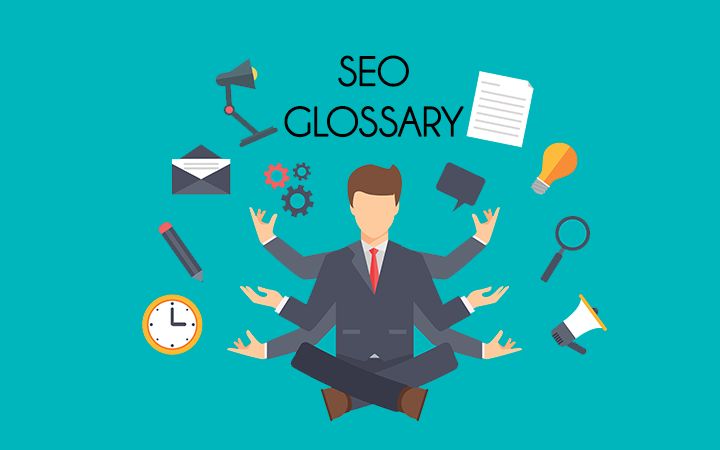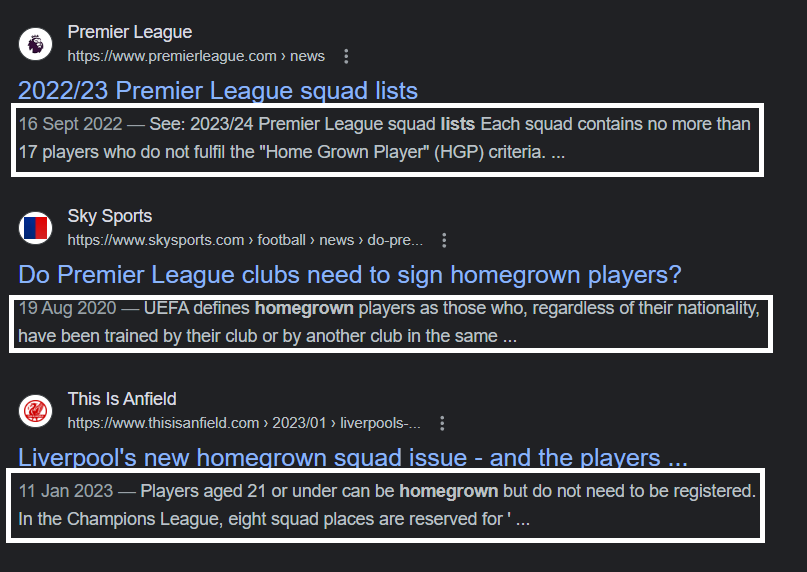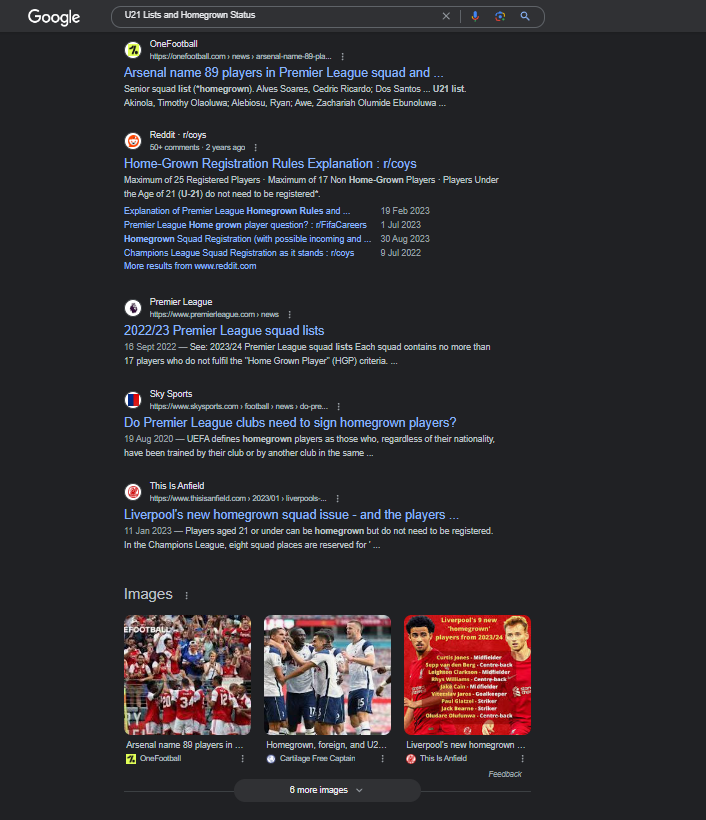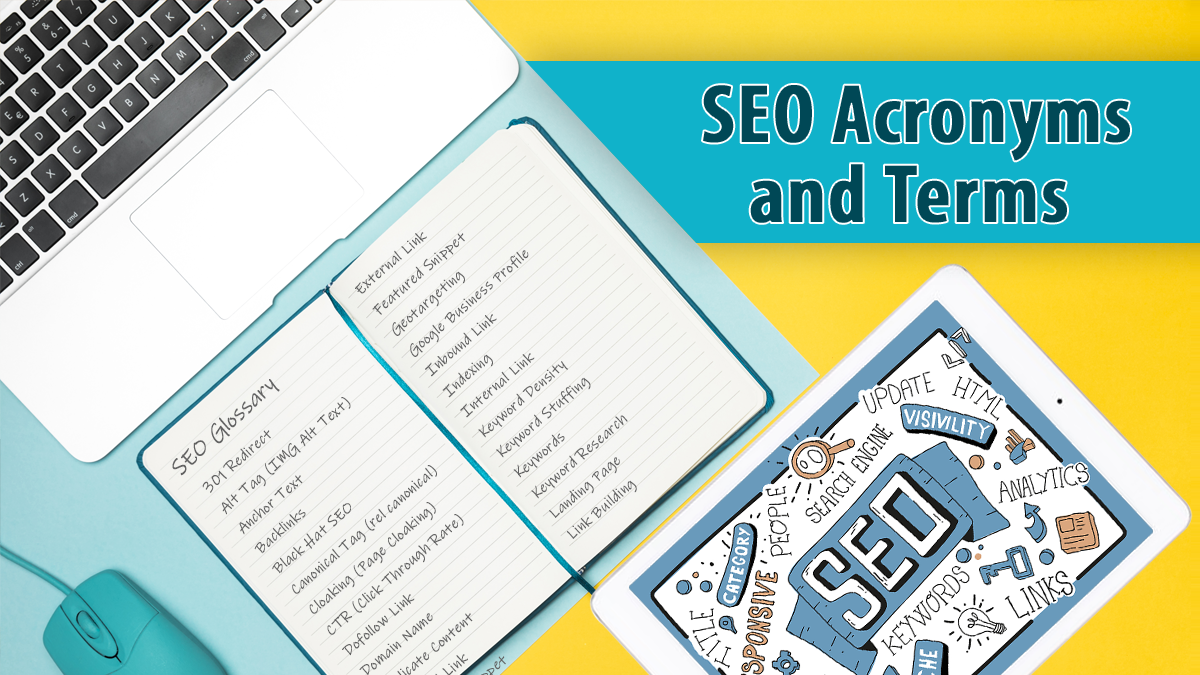Understanding SEO acronyms is essential in the vast landscape of digital marketing. Each industry has its jargon, and SEO is no different, with a plethora of specialized terms and phrases. This guide is beneficial for beginners diving into SEO and those who have already partnered with an SEO agency. Knowing these terms is a vital first step in your SEO journey.
The journey starts with understanding the most fundamental term: SEO, or search engine optimization. This strategy involves the meticulous optimization of websites or web pages to improve their visibility and ranking on search engine results pages (SERPs), including major platforms like Google and Bing.
SEO is a pivotal element for online visibility and accessibility, playing a crucial role in the digital world. Now, let’s dive into the various types of SEO and unravel their meanings.
Types of SEO
SEO encompasses several approaches, each with its focus and goals. Let’s focus on different types of SEO:
Organic SEO
Organic SEO is the primary form of search engine optimization. It focuses on optimizing a website’s content and structure to improve its ranking in unpaid search results. The aim is to naturally increase the website’s ranking without resorting to paid advertising.
Technical SEO
Technical SEO concentrates on a website’s technical elements. This includes enhancing crawlability, site performance, and mobile responsiveness. The emphasis is on optimizing the backend aspects of a website to boost its search engine ranking.
Local SEO
Local SEO is designed for businesses looking to increase their visibility in local search results, such as on Google Maps. It involves improving a business’s online presence and ensuring accurate location-specific information to attract local customers.
E-commerce SEO
E-commerce SEO is tailored for online retail businesses. It aims to optimize product pages, streamline the site structure, and tackle e-commerce-specific challenges. The goal is to enhance exposure, drive traffic, and increase conversions for online stores.
International SEO
International SEO aims to optimize a website’s performance across various countries or languages. This often involves creating content that is specific to a region or language, ensuring effective performance in global search engines.
Mobile SEO
Mobile SEO focuses on optimizing websites for mobile devices. This includes ensuring fast load times, user-friendly navigation on smaller screens, and implementing mobile-responsive design elements. The goal is to deliver an optimal experience for users accessing the site via mobile devices.
Voice Search SEO
As voice search assistants like Siri and Alexa become increasingly prevalent, Voice Search SEO is growing in importance. This approach adapts a website’s content and structure to suit the unique needs of voice search, aiming for better rankings in voice-driven search queries.
With an understanding of these SEO types, let’s explore some commonly used SEO terminology and concepts. Whether you’re an experienced professional or a newcomer, grasping this industry-specific jargon is key to enhancing your website’s visibility and attracting organic traffic.
SEO Glossary

301 Redirect
A 301 Redirect is used to inform search engines that a webpage has permanently moved to a new URL. This technique is vital for preserving search engine rankings and ensuring users are smoothly redirected to the updated page.
Alt Tag (IMG Alt Text)
Alt Text, or Alternative Text, is a description embedded in an image’s HTML code. It provides search engines and individuals with difficulties in loading or viewing images with essential information about the image’s content. This feature is important for accessibility and helps convey the meaning of the image.
Anchor Text
Anchor text is the clickable text in a hyperlink. It plays a crucial role in SEO by providing context and relevance to the linked content. Effective anchor text should be succinct, relevant, and contribute positively to the user experience.
Backlinks
Backlinks, also known as inbound links, are links from one website to another. These links are pivotal in search engine algorithms, impacting a webpage’s ranking and authority. Quality trumps quantity in this context; high-quality backlinks from reputable sites are more influential in boosting a website’s SEO than a large number of lower-quality links.
Black Hat SEO
Black hat SEO refers to the use of unethical and manipulative tactics to increase a website’s search engine ranking, violating search engine guidelines. Practices such as keyword stuffing, cloaking, and link manipulation fall under this category. Engaging in black hat SEO can lead to severe penalties from search engines, harming a website’s visibility and credibility. It is widely condemned in ethical SEO circles.
Canonical Tag (rel canonical)
The canonical tag, or rel canonical, is an HTML element that helps web developers indicate the preferred version of a webpage. It signals to search engines which URL should be regarded as the master copy, especially useful in managing duplicate content. By using the canonical tag, search engines can more accurately identify and prioritize the main version of a webpage during indexing.
Cloaking (Page Cloaking)
Cloaking, a black hat SEO tactic, involves showing different content to search engines than what is displayed to actual users. This deceptive practice aims to manipulate search engine rankings and is strongly discouraged. Search engines may penalize websites that employ cloaking due to its unethical nature.
Also Read: What is cloaking in SEO? And Permitted Cloaking Practices
CTR (Click Through Rate)
Click-through rate (CTR) measures how effectively a webpage or online advertisement captures user engagement. It is calculated as:
CTR Formula:
Number of Clicks ÷ Number of Impressions = CTR
A higher CTR indicates that a significant proportion of users who viewed the URL clicked on it, marking the success of the digital marketing campaign.
Dofollow Link
A dofollow link is a hyperlink that enables search engines to follow through to the linked page. By default, links are dofollow, allowing search engine crawlers to account for them in evaluating the relevance and quality of the linked content.
Conversely, setting links to nofollow tells search engines not to pass on authority or influence to the linked page. Dofollow links are considered markers of credibility and can positively influence a site’s search engine ranking.
Domain Name
A domain name is essentially your website’s virtual address. It serves as a unique identifier, allowing users to access your content via their web browsers. The domain name is a key element in establishing and maintaining your online presence, ensuring your website is easily accessible.
Duplicate Content
Duplicate content refers to material that appears in more than one place on the internet, typically across different URLs. This redundancy can negatively impact your search engine rankings and the user experience. Having unique content on your site is important to avoid confusion for both search engines and users.
External Link
An external link on your website leads visitors to a different domain. These links are important for connecting related online content and providing users with additional information or references. External links contribute significantly to the web’s interconnectedness and can influence search engine rankings.
Featured Snippet
A featured snippet is a brief summary or extract displayed at the top of a search engine’s results page. It directly answers a user’s query, offering quick insights without the need to click through to a specific result. Websites strive to have their content featured in these snippets to boost visibility.
Geotargeting
Geotargeting is the practice of customizing your online marketing efforts, including SEO and advertising, to target specific geographic regions. By catering to the preferences and needs of users in particular locations, businesses can increase their relevance and impact.
Google Business Profile
Google Business Profile, previously known as Google My Business (GMB), is a free service by Google. It allows businesses to manage how they appear on various Google services, including Google Maps and search results. Maintaining an accurate and current profile is crucial for enhancing a business’s online presence and trustworthiness.
Inbound Link
An inbound link is a hyperlink on another website that directs traffic to your site. It functions like a referral or endorsement from that website, suggesting a connection or relevance between the two.
Indexing
Indexing is the process by which search engines, such as Google, catalog and organize web pages in their vast database. It involves making your website both accessible and searchable on the internet.
Internal Link
An internal link is a hyperlink connecting one page of your website to another within the same domain. These links are crucial for helping visitors navigate your site and for aiding search engines in comprehending the structure and hierarchy of your content.
Keyword Density
In simple terms, keyword density refers to how often a specific keyword appears on a webpage, expressed as a ratio or percentage of the page’s overall word count.
The calculation is straightforward: ([Number of times the keyword is used] / [total word count]) x 100.
Keyword Stuffing
Keyword stuffing, a frowned-upon SEO tactic, involves overloading content, meta tags, and backlink anchor text with keywords. This is done in an attempt to manipulate search engine rankings unfairly.
Keywords
Keywords are the terms and phrases that users input into search engines to find relevant information. SEO experts strategically integrate these keywords into website elements like meta tags and page content to signal to search engines the relevance of their site to specific user queries.
Keyword Research
Keyword research is a systematic process of identifying and selecting appropriate keywords and phrases for a website or business. This critical step in SEO helps businesses tailor their online content to match the search terms likely used by their target audience.
Landing Page
A landing page is the webpage users arrive at after clicking a link in search results or advertisements. It plays a key role in both user experience and conversion optimization.
Link Building
Link building is the strategic process of acquiring hyperlinks from other websites to your own. The emphasis here is on quality over quantity. It’s advisable to avoid links from dubious or low-quality sites, as they do not contribute positively to long-term SEO success.
Link Farm
A link farm is a network of web pages created solely to link to a specific target page, with the intention of manipulating and boosting that page’s search engine rankings. However, utilizing link farms is a black hat SEO tactic and is widely disapproved of in ethical digital marketing practices.
Long-Tail Keyword
A long-tail keyword is an extended, more specific search phrase, usually consisting of three or more words. Unlike broader keywords, long-tail keywords target niche demographics and are often more effective in attracting a specific audience to your website.
Meta Description
A meta description is a brief summary that appears in search engine results, usually between 155-160 characters (up to 320 characters). Its purpose is to provide users with a succinct overview of the webpage’s content.

Meta Keywords
Meta keywords are HTML elements used to inform search engines about the primary themes of a page. Although once prevalent, their importance has waned significantly, and they are seldom used in modern SEO strategies.
Meta Tags
Meta tags are HTML elements that provide search engines with information about a webpage’s content. While not visible to users in web browsers, these tags are crucial in helping search engines understand and categorize a page.
Also Read: Meta Tag Myths Busted
Off-Page SEO
Off-page SEO encompasses activities outside of your website that influence its search engine rankings. This often includes acquiring backlinks from other websites to boost your site’s perceived authority and credibility in the eyes of search engines.
On-Page SEO
On-page SEO is about enhancing a website’s performance in search engines by optimizing elements directly on the site. This includes fine-tuning meta tags, offering high-quality and unique content, and ensuring the site’s structure is intuitive and user-friendly.
Organic Search
Organic search results are the listings in a search engine that appear naturally due to their relevance to user queries. Unlike sponsored advertisements, these results are determined by the search engine’s algorithms, offering users unbiased and pertinent information.
Outranking
Outranking refers to a website securing a higher position in search engine results compared to another site. This achievement is often due to successful SEO strategies, relevant content, and the overall authority of the website.
Over-Optimization
Over-optimization occurs when a website excessively uses keywords or other SEO tactics, adversely impacting its search engine rankings. Excessive optimization can result in penalties from search engines, which favor content that is high-quality and user-centric over pages filled with excessive keywords or manipulative practices.
PageRank
Google’s PageRank is an algorithm that assesses the importance of web pages based on the quality and quantity of inbound links. A page with numerous high-quality inbound links typically has a higher PageRank, enhancing its chances of appearing prominently in search engine results.
Position
“Position” refers to the specific rank a website holds in search engine results for particular search terms or phrases. A higher position means better visibility, increasing the likelihood of attracting user clicks and traffic.
Query
Queries are the words or phrases that people type into search engines when looking for information. These search terms are essential for search engines to understand user intent and direct them to relevant web pages.
Ranking Factor
A ranking factor is a specific characteristic of a web page or website that affects its position in search engine results. Search engines use a variety of criteria to evaluate the relevance and quality of websites, and these factors are crucial in determining a page’s ranking.
Redirect
Redirects are used to forward users from one URL to another, often from outdated or removed pages to newer, relevant content. This practice improves the user experience by ensuring visitors can still find the information they need, even if the original page is no longer available.
Responsive Design
Responsive design refers to a web design approach that ensures a website looks and functions optimally across various devices and screen sizes. Websites with responsive design adjust their layout and content to provide a seamless experience, whether accessed on a desktop, tablet, or smartphone.
Rich Snippet
Rich snippets are enhanced search results that include additional information beyond the standard link and description. They may feature extra details like reviews, ratings, and other metadata. Rich snippets give users more insight into a page’s content directly within search results, aiding them in deciding which link to click.
Robots.txt
The robots.txt file is used by website owners to guide search engine crawlers. It specifies which pages or files the crawler can or cannot request from the site. Using robots.txt, website managers can control the indexing of their site by search engines, thus influencing how their content is presented in search results.
Schema Markup
Schema Markup is a form of code implemented on web pages to help search engines more effectively understand and categorize the content. It provides a structured format that enhances the comprehension of content, leading to more precise and relevant search results.
Also Read: Schema Markup for SEO: The Secret Ingredient for Search Engine Optimization
Search Engine
A search engine is a digital tool that searches a database or index for items matching keywords or phrases entered by users. It uses various algorithms and criteria to provide users with search results that align closely with their query.
Search Engine Marketing
Search Engine Marketing (SEM) is a digital marketing strategy focused on increasing the visibility of websites or web pages in search engine results. SEM primarily uses paid channels like Pay-Per-Click advertising to attract targeted traffic to the promoted websites.
SEO Friendly
A website or content described as “SEO-friendly” is designed for easy understanding and indexing by search engines. This means adhering to SEO best practices, optimizing content, and ensuring that technical aspects are aligned with search engine algorithms.
Search Engine Results Page (SERP)
The SERP, or Search Engine Results Page, is what users see after conducting a search. It displays a range of results relevant to their search query, typically including organic search results, sponsored ads, and special features like featured snippets and knowledge panels.

Search Engine Spider (Crawler)
Search Engine Spiders, or Web Crawlers, are automated bots that systematically browse the internet by visiting different URLs. They collect information from websites, which is then used by search engines to create an index for efficiently retrieving pertinent content.
Site Map
A site map is essentially a roadmap of your website. It’s a document listing your site’s various pages, videos, and other files, along with the relationships between them. Site maps are crucial for search engine crawlers to understand and navigate a website’s structure.
Structured Data
Structured data refers to information that is organized and formatted in a specific manner for enhanced clarity and meaning. In the context of web content, structured data helps search engines better comprehend the content on a page, increasing its chances of being displayed in relevant search results.
Title Tag
The title tag, embedded in a web page’s HTML code, specifies the title of that page. These titles appear in search engine results, offering users a preview of the content they will find upon clicking the link.
URL (Uniform Resource Locator)
A URL is a web address that guides users to a specific location on the internet. It precisely identifies the location of a web resource on a network.
White Hat SEO
White Hat SEO refers to ethical and legitimate practices in search engine optimization. It complies with search engine guidelines and terms of service, focusing on delivering high-quality, relevant content, ensuring a superior user experience, and avoiding manipulative tactics. This approach aims for long-term, sustainable results within the framework set by search engines.
Conclusion
Gaining proficiency in digital marketing and SEO necessitates a thorough understanding of the various terms and acronyms that define this field. Familiarity with SEO and mastery of key digital marketing terminology are crucial for effective strategy development and communication in the ever-changing landscape of online visibility.
Whether you’re an experienced marketer or new to the field, comprehending these terms is vital for success in digital marketing. Embrace this knowledge, stay informed, and use SEO language as a tool to maximize your online presence.
FAQs
Why are SEO acronyms and terms important to learn?
Understanding SEO acronyms and terms is crucial for effectively implementing and managing SEO strategies, as well as for communicating accurately within the digital marketing industry.
What is the difference between on-page and off-page SEO?
On-page SEO focuses on optimizing elements within a webpage, like content and images, while off-page SEO involves external activities such as link building and social media engagement.
What are the benefits of backlinks in SEO?
Backlinks from other websites enhance your site’s authority and credibility in the eyes of search engines, improving its ranking.
What impact does content quality have on SEO?
High-quality, relevant content is pivotal for SEO success. Search engines prioritize valuable content, leading to better user experiences and higher website authority.
























